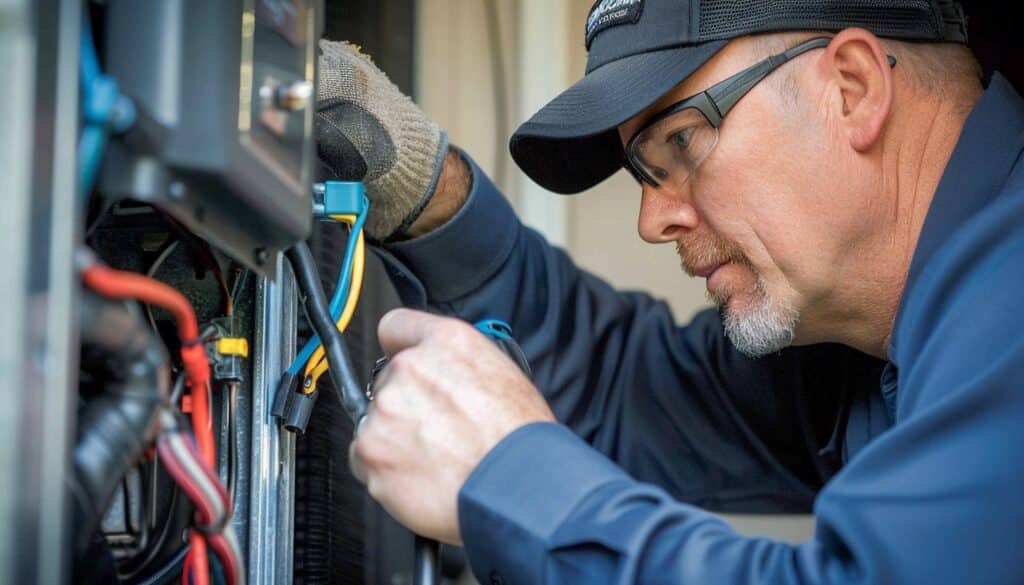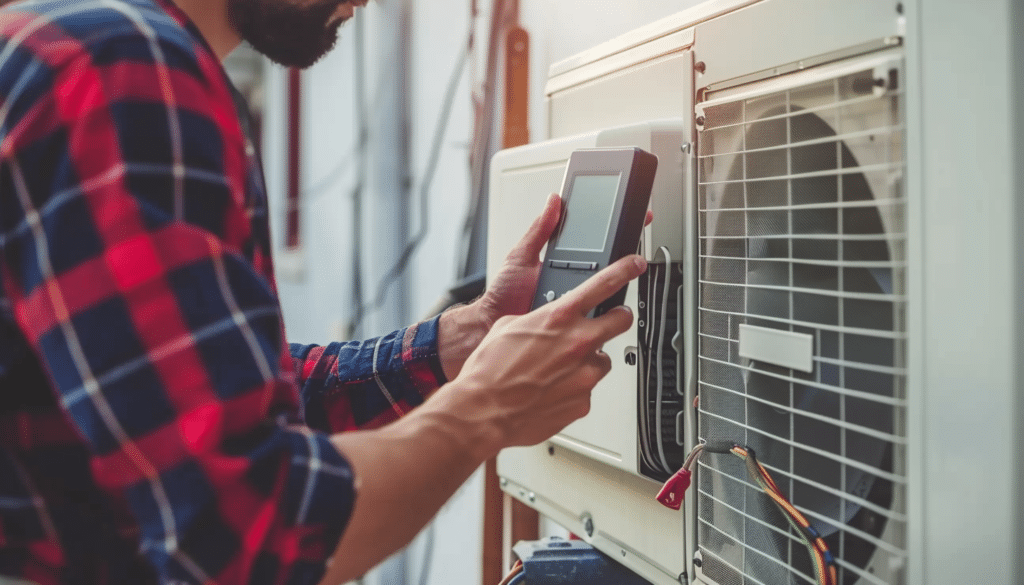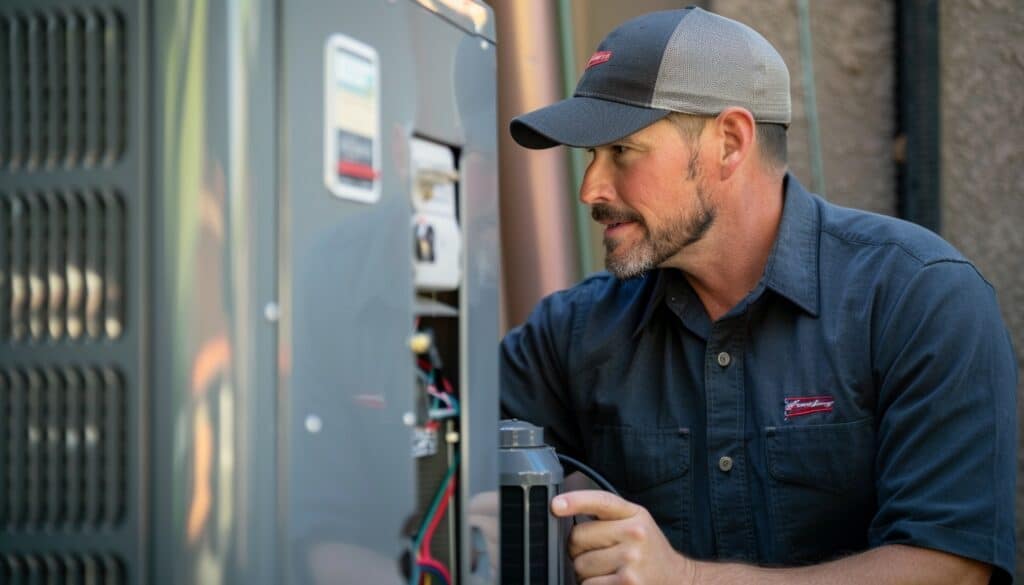Quick Tips to Diagnose and Fix AC Problems at Home
Table of Contents
- Introduction
- Understanding Common AC Problems
- Signs of a Faulty AC
- Potential Causes of AC Malfunctions
- Step-by-Step Guide to Diagnose AC Problems
- Checking the Thermostat
- Inspecting Air Filters
- Examining the Circuit Breaker
- Evaluating the Condenser Unit
- How to Fix Common AC Issues at Home
- Replacing Air Filters
- Cleaning the Condenser Coils
- Unclogging the Drain Line
- Recharging Refrigerant Levels
- When to Call a Professional
- Complex Repairs and Safety Concerns
- Benefits of Professional HVAC Services
- FAQs: Your AC Troubleshooting Questions Answered
- Conclusion
Introduction
Air conditioning (AC) is essential for maintaining comfort, especially during the sweltering summer months. However, like any other appliance, AC units can develop problems over time. Knowing how to diagnose and fix AC problems at home can save you time and money while ensuring your indoor environment remains comfortable. This comprehensive guide will walk you through common AC issues, how to troubleshoot them, and when it might be best to call in a professional.

Understanding Common AC Problems
Diagnosing and fixing AC problems requires a solid understanding of what can go wrong. The key to effective troubleshooting lies in recognizing the symptoms and understanding their potential causes.
Signs of a Faulty AC
A malfunctioning AC often exhibits one or more of the following symptoms:
- Little to No Airflow: If the air coming from your vents is weak or nonexistent, it indicates a blockage or a malfunction in the system.
- Blowing Warm Air: When your AC blows warm air instead of cold, it could be a sign of a refrigerant leak or a problem with the compressor.
- Excessive Noise: Unusual noises like grinding, squealing, or banging suggest mechanical issues within the AC unit.
- Unpleasant Odors: Foul smells can indicate mold growth in the ductwork or a burnt-out wire inside the unit.
- Starting Difficulties: If your AC struggles to start or frequently cycles on and off, it may be experiencing electrical or mechanical failures.
Potential Causes of AC Malfunctions
Understanding the potential causes of AC problems can help in diagnosing the issue effectively. Here are some common causes:
- Dirty or Clogged Filters: Air filters that are dirty or clogged restrict airflow, reducing the system’s efficiency.
- Low Refrigerant Levels: Low refrigerant levels can cause your AC to blow warm air, and it may also lead to ice buildup on the coils.
- Thermostat Issues: A malfunctioning thermostat can prevent your AC from turning on or cause it to cycle incorrectly.
- Electrical Problems: Faulty wiring, blown fuses, or tripped circuit breakers can disrupt the functioning of your AC.
- Blocked Condenser Coils: Dirt and debris on the condenser coils can restrict the unit’s ability to cool the air.

Step-by-Step Guide to Diagnose AC Problems
Diagnosing AC problems at home involves a systematic approach. By following these steps, you can pinpoint the issue and determine whether it’s something you can fix yourself.
Checking the Thermostat
The thermostat is the brain of your AC system, controlling when and how it operates. Here’s how to check if it’s functioning correctly:
- Set the Temperature: Ensure the thermostat is set to “cool” and the temperature is set lower than the current room temperature.
- Replace Batteries: If your thermostat is battery-operated, replace the batteries and see if that resolves the issue.
- Check for Display Issues: If the thermostat display is blank or unresponsive, it may need to be reset or replaced.
Inspecting Air Filters
Air filters are crucial for maintaining proper airflow. Here’s how to inspect and diagnose issues related to air filters:
- Locate the Filter: Identify where the air filter is located, typically in the return air duct or near the blower compartment.
- Remove and Inspect: Remove the filter and hold it up to the light. If you can’t see much light through it, the filter is clogged.
- Replace if Necessary: If the filter is dirty, replace it with a new one to restore proper airflow.
Examining the Circuit Breaker
AC units can trip the circuit breaker, cutting off power to the system. To check the circuit breaker:
- Locate the Breaker Box: Find your home’s breaker box, usually in the basement, garage, or utility room.
- Check the AC Breaker: Look for the breaker labeled for the AC unit. If it’s tripped, reset it by switching it off and then on again.
- Test the AC: After resetting, try running the AC again to see if the issue is resolved.

Evaluating the Condenser Unit
The condenser unit is located outside and plays a critical role in cooling the air. Here’s how to evaluate its condition:
- Check for Debris: Ensure there are no leaves, dirt, or debris obstructing the condenser coils.
- Listen for Unusual Noises: Loud or unusual noises could indicate a problem with the fan or motor.
- Inspect the Coils: If the coils appear dirty or clogged, they may need to be cleaned to ensure efficient operation.
How to Fix Common AC Issues at Home
Once you’ve diagnosed the problem, it’s time to fix it. Below are some common AC issues you can address yourself.
Replacing Air Filters
Replacing air filters is one of the simplest yet most effective ways to improve your AC’s performance:
- Choose the Right Filter: Ensure you select a filter that matches your unit’s specifications.
- Install the New Filter: Insert the new filter, making sure it’s oriented correctly as indicated by the arrows on the filter frame.
- Schedule Regular Replacements: Mark your calendar to replace the filter every 1-3 months, depending on usage and filter type.
Cleaning the Condenser Coils
Dirty condenser coils reduce the efficiency of your AC. Here’s how to clean them:
- Turn Off the Power: Always disconnect power before working on your AC to avoid electrical shocks.
- Remove Debris: Use a brush or vacuum to remove any surface debris from the coils.
- Apply Coil Cleaner: Spray a commercial coil cleaner on the coils, following the product instructions.
- Rinse and Dry: Gently rinse the coils with a hose and allow them to dry before restoring power.
Unclogging the Drain Line
A clogged drain line can cause water to back up and damage your AC unit. To unclog it:
- Locate the Drain Line: The drain line is typically a PVC pipe near the indoor unit.
- Clear the Clog: Use a wet/dry vacuum to suck out any debris clogging the line.
- Prevent Future Clogs: Pour a mixture of vinegar and water down the drain line periodically to prevent future clogs.
Recharging Refrigerant Levels
Low refrigerant levels can be a serious issue that typically requires professional attention. However, if you’re experienced, you can recharge it as follows:
- Purchase the Correct Refrigerant: Ensure you have the correct type of refrigerant for your unit.
- Connect the Refrigerant Line: Attach the refrigerant line to the service port on your AC unit.
- Monitor the Gauge: Slowly add refrigerant while monitoring the pressure gauge to avoid overcharging.

When to Call a Professional
While many AC issues can be handled at home, there are times when it’s best to call in a professional.
Complex Repairs and Safety Concerns
If the problem involves electrical components, refrigerant handling, or major mechanical parts, it’s safer and more effective to have a licensed HVAC technician perform the repair. This not only ensures your safety but also prevents further damage to your AC unit.
Benefits of Professional HVAC Services
Professional HVAC services offer several advantages, including:
- Expert Diagnostics: Professionals use advanced tools to accurately diagnose and fix issues.
- Warranty Protection: Professional repairs are often covered by warranties, providing peace of mind.
- Efficiency Improvements: Technicians can optimize your system for better efficiency, saving you money on energy bills.
FAQs: Your AC Troubleshooting Questions Answered
Q1: What should I do if my AC is running but not cooling?
A: First, check if the thermostat is set correctly. If it is, inspect the air filter and condenser coils for dirt or obstructions. If the issue persists, low refrigerant levels might be the
cause, which requires professional attention.
Q2: How often should I replace my AC filters?
A: AC filters should typically be replaced every 1-3 months, depending on your usage and the type of filter. Homes with pets or allergies may need more frequent changes.
Q3: Why is my AC making strange noises?
A: Strange noises could indicate loose parts, a failing motor, or debris in the condenser unit. It’s best to shut off the unit and inspect it. If you’re unsure, contact a professional.
Q4: How can I improve my AC’s efficiency?
A: Regular maintenance, such as cleaning the condenser coils, replacing filters, and ensuring the refrigerant levels are correct, can significantly improve your AC’s efficiency.
Q5: When should I consider replacing my AC unit?
A: If your AC is more than 10-15 years old, requires frequent repairs, or no longer cools your home efficiently, it may be time to consider a replacement. A new, energy-efficient model can reduce your energy bills and improve comfort.
Conclusion
Diagnosing and fixing AC problems at home can seem daunting, but with the right knowledge and tools, many issues are manageable. Regular maintenance and prompt attention to problems can extend the life of your AC unit and ensure your home remains comfortable year-round. However, don’t hesitate to call in a professional when the situation requires expertise beyond basic troubleshooting. With these tips, you’re well on your way to maintaining a cool and comfortable home all summer long.
Whether you’re a DIY enthusiast or prefer leaving it to the pros, understanding your AC system is key to keeping it running smoothly.

